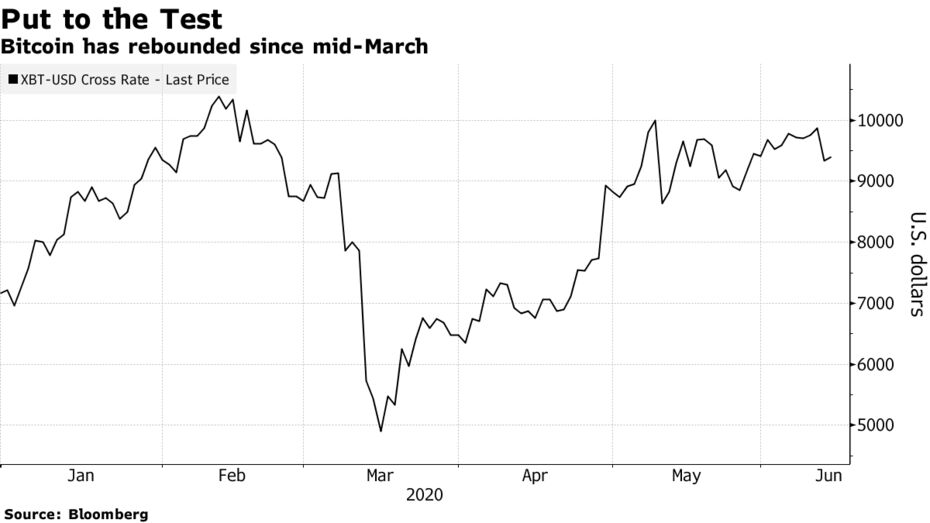
IN LOVE WITH THE MONEY
- Price action points to speculative use versus store of value
- Bitcoin has gained 75% since mid-March to trade around $9,500
If Bitcoin were a student, you could think of it as maybe having entered middle school by now given its age. Maybe, also, it just took its first test — and according to JPMorgan Chase & Co., it got “mostly positive” results.
In March, Bitcoin — like many other areas of the market — underwent a stretch of severe disruption as world economies started to shut down and investors fled riskier assets due to the coronavirus outbreak. But Bitcoin emerged relatively unscathed, according to a report from the bank titled “Cryptocurrency takes its first stress test: Digital gold, pyrite, or something in between?”
That cryptocurrencies largely survived the madness of March suggests “longevity as an asset class,” wrote strategists at the bank led by Joshua Younger and Nikolaos Panigirtzoglou. But, they say, “price action points to their continued use more as a vehicle for speculation than medium of exchange or store of value.”

Instead, Bitcoin appears to have been correlated to riskier assets like equities, the JPMorgan strategists said.
That seemed to be the case on Thursday, when the world’s largest digital coin fell as much as 7.8% amid the worst S&P 500 slump in 12 weeks. On Friday, it rebounded, retracing about a third of the previous day’s losses to trade around $9,500. It’s gained about 75% since mid-March but is still half off its near-$20,000 record peak.

The original cryptocurrency was born on Halloween 2008 with the publication of a research paper by someone who went by Satoshi Nakamoto titled “Bitcoin: A Peer-to-Peer Electronic Cash System.” That would make it almost 12 years old. The March crash was Bitcoin’s first stress test, say the strategists, who point out that the token’s relatively nascent existence precluded it from undergoing previous downturns. During the swoon, Bitcoin’s moves were volatile — but that was the case for more traditional asset classes as well, they wrote.
Here are the positives: In the depths of the March panic, the coin’s valuations didn’t diverge much from intrinsic levels, meaning that its value only briefly dipped below mining costs even as volatility spiked. In addition, there were few signs of a flight to liquidity within the asset class. In other words, during shock periods like the one experienced in March, traders might rush for safety or toward more liquid parts of the crypto market. But most cryptocurrencies fell at the same time — and that correlation has risen over the past few months.
“That suggests that there is little evidence of run dynamics, or even material quality tiering among cryptocurrencies, even during the throws of the crisis in March,” they wrote.
Finally, the coin’s market structure turned out to be more resilient than those of currencies, equities, Treasuries and gold, they wrote. To measure this, the strategists looked at liquidity, or the bid-offer spread of the order book, which is directly related to volatility. When the order book thins, a given transaction could result in a larger price change, and vice versa. Though Bitcoin saw among the most severe drops in liquidity around the peak of the crisis, that disruption unwound itself much faster than other asset classes.
SOURCES: Bloomberg | Protons | J.P.Morgan


